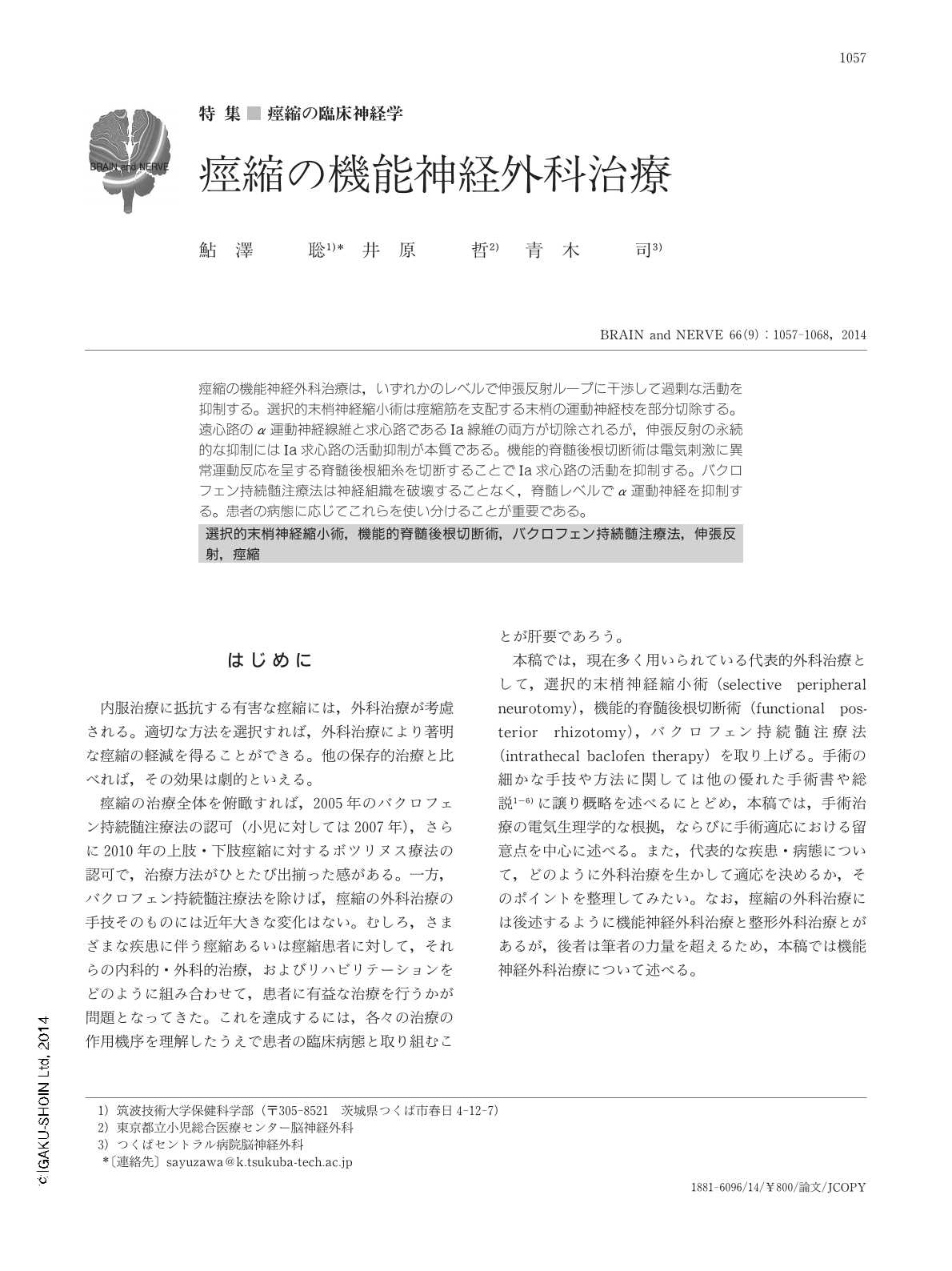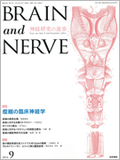Japanese
English
- 有料閲覧
- Abstract 文献概要
- 1ページ目 Look Inside
- 参考文献 Reference
痙縮の機能神経外科治療は,いずれかのレベルで伸張反射ループに干渉して過剰な活動を抑制する。選択的末梢神経縮小術は痙縮筋を支配する末梢の運動神経枝を部分切除する。遠心路のα運動神経線維と求心路であるIa線維の両方が切除されるが,伸張反射の永続的な抑制にはIa求心路の活動抑制が本質である。機能的脊髄後根切断術は電気刺激に異常運動反応を呈する脊髄後根細糸を切断することでIa求心路の活動を抑制する。バクロフェン持続髄注療法は神経組織を破壊することなく,脊髄レベルでα運動神経を抑制する。患者の病態に応じてこれらを使い分けることが重要である。
Abstract
The basic concept of neurosurgical procedures to treat spasticity is to decrease the hyperactivity of the stretch reflex. Selective peripheral neurotomy is a method to partially resect the peripheral motor nerve. The alpha motor and Ia afferent nerves are resected, but the latter is essential owing to its lasting effect in reducing spasticity. Focal spasticity in adult patients can be effectively treated using peripheral neurotomy. Functional posterior rhizotomy, mostly used to treat paraplegic spasticity in children with cerebral palsy, involves the sectioning of posterior rootlets associated with abnormal motor responses to electrical stimulation. Intrathecal baclofen therapy is useful in treating diffuse spasticity. Baclofen inhibits the activity of alpha motor neurons both pre and post synaptically at the level of the spinal cord. A decrease in Hmax/Mmax in the H-reflex electrophysiologically represents the effectiveness of these procedures. Good clinical results can be achieved by appropriate indication depending on the clinical features of spasticity in each patient.

Copyright © 2014, Igaku-Shoin Ltd. All rights reserved.


